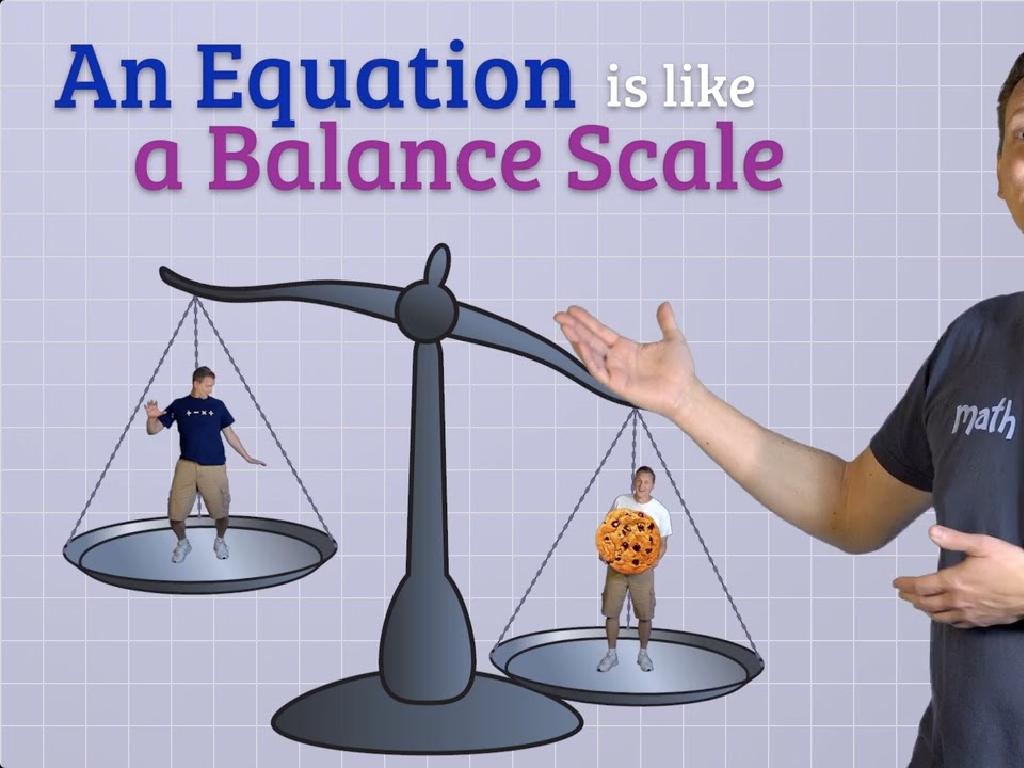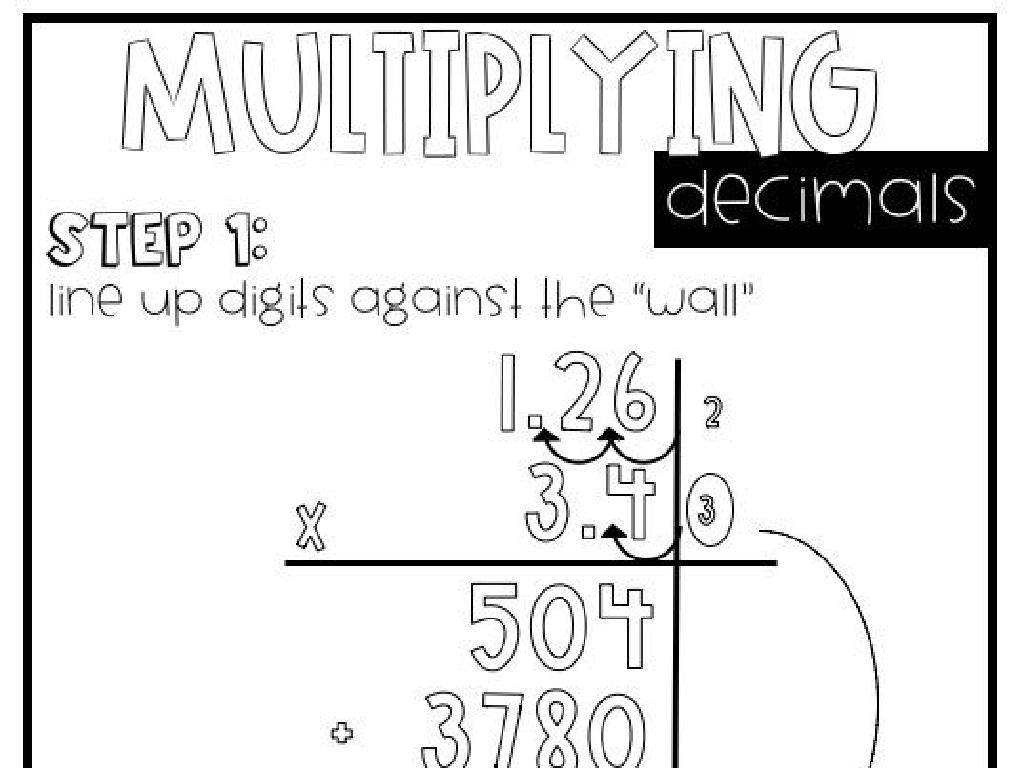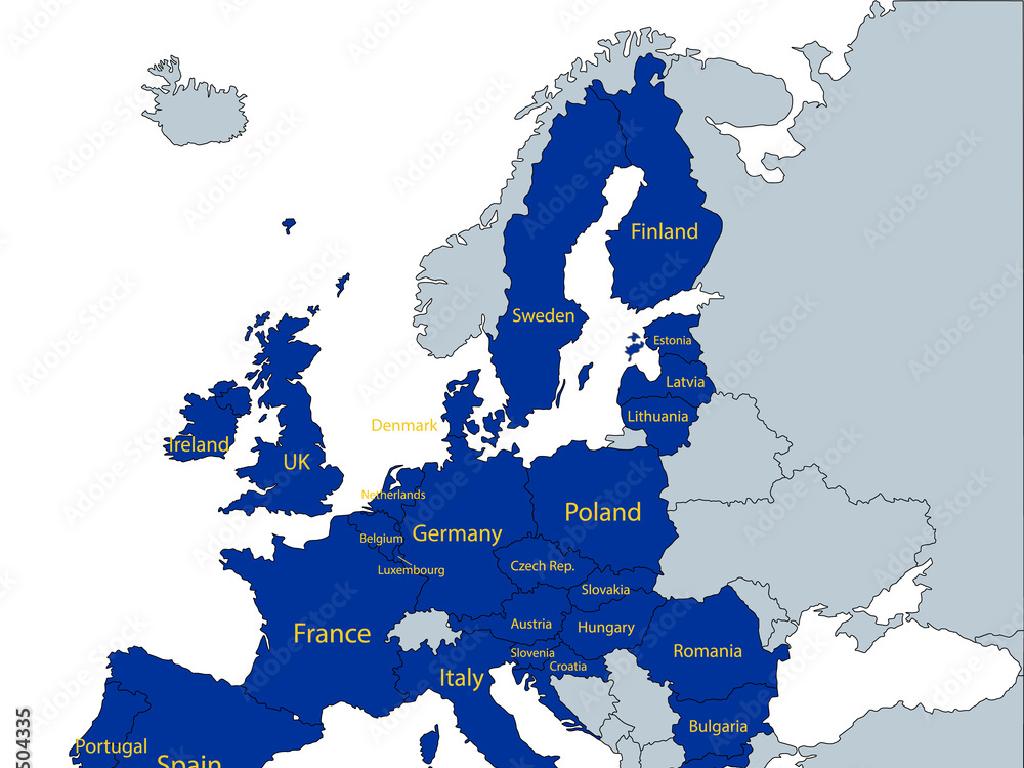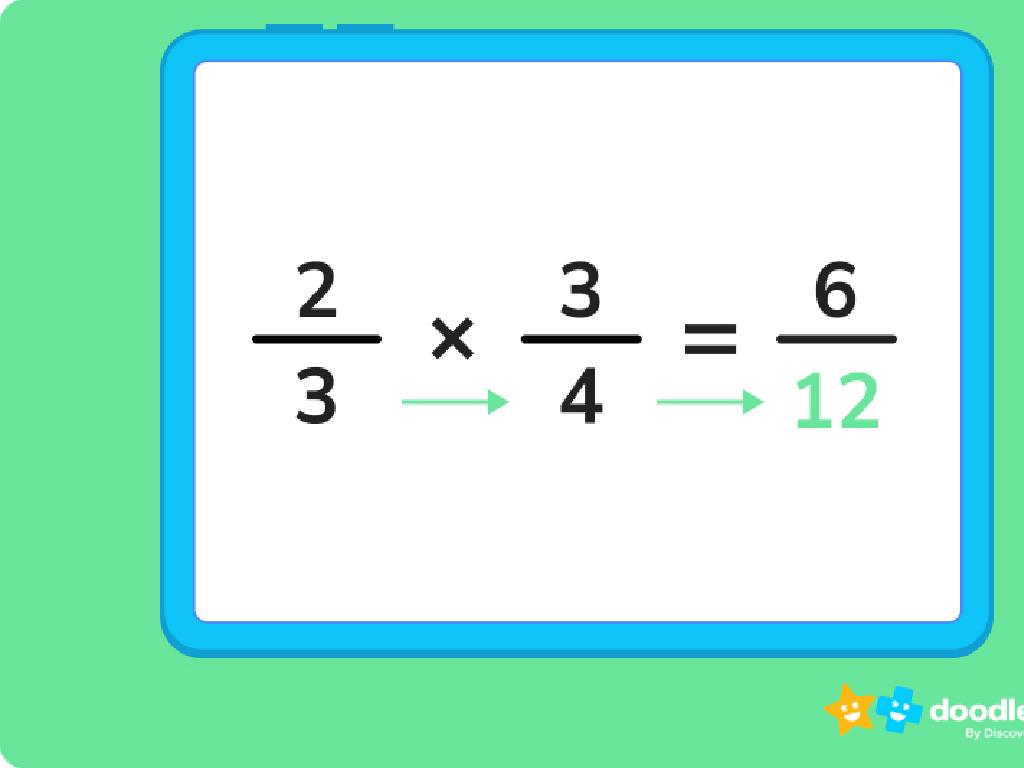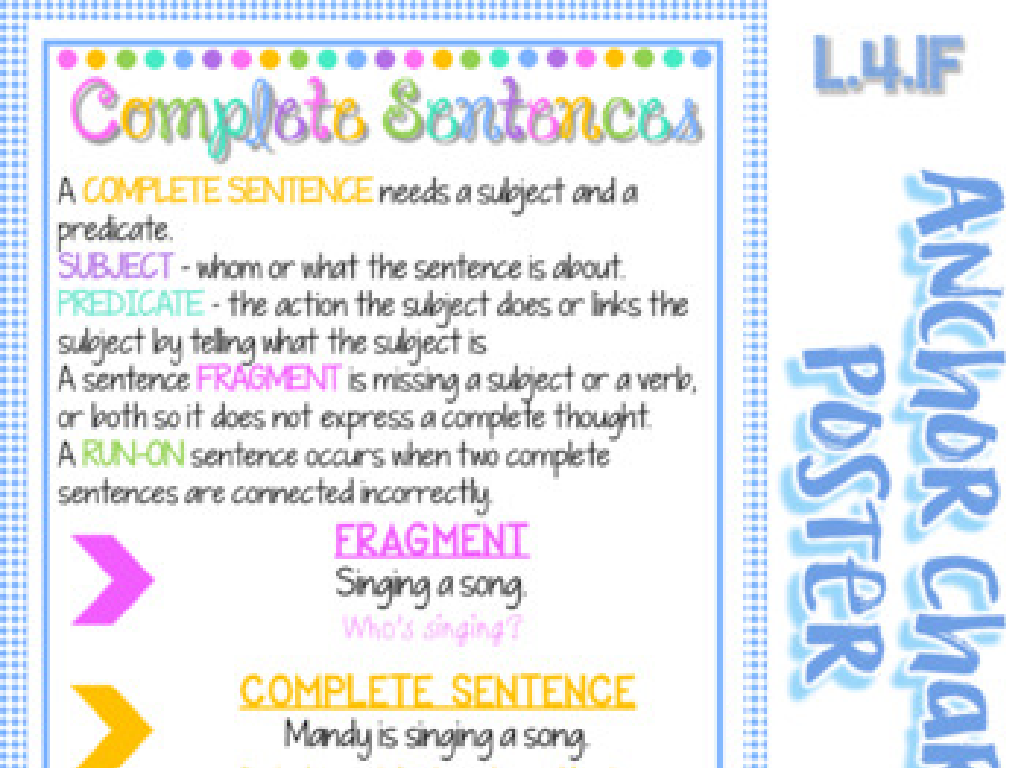Count Blocks - Up To 30
Subject: Math
Grade: Kindergarten
Topic: Numbers And Counting To 30
Please LOG IN to download the presentation. Access is available to registered users only.
View More Content
Welcome to Numbers: Counting with Blocks!
– Greet our little mathematicians
– Today’s goal: Learn to count
– Counting is fun and useful
– Counting up to 30
– We’ll count from 1 to 30 together
– Using blocks to count
– Blocks help us visualize numbers
|
This slide is designed to introduce kindergarten students to the concept of counting within the range of 1 to 30. The lesson will be interactive and visual, using blocks to help the children understand and visualize the numbers as they count. It’s important to maintain an enthusiastic tone to engage the children and to encourage them to participate actively. The blocks will serve as a tangible representation of each number, making the abstract concept of counting more concrete. During the activity, guide the students through counting the blocks one by one, grouping them to understand the concept of quantity and sequence. This hands-on approach will help solidify their understanding of numbers and counting.
What is Counting?
– Counting means numbers in order
– It’s like steps on a staircase
– Each number is a step you climb
– Practice counting: 1 to 10
– We’ll count together: one, two, three…
– Counting is fun and easy!
|
This slide introduces the concept of counting to Kindergarten students by comparing it to climbing stairs, which is a relatable activity for them. Emphasize that counting is sequential, just like taking one step at a time. Engage the students by practicing counting aloud from 1 to 10 as a class. Use hand motions or physical objects like blocks to visually represent each number as you count. This will help the students understand the order of numbers and that each number represents a quantity. Encourage the students to join in and count with you, making it an interactive and enjoyable activity. The goal is to make them comfortable with the number sequence up to 10, laying the foundation for counting to higher numbers.
Counting Blocks Together
– Blocks as counting tools
– One block equals one number
– Stacking blocks to count
– As we stack, we count each block
– How high can we count?
– Let’s try to reach up to 30 blocks!
|
This slide introduces the concept of using physical objects, like blocks, to help kindergarteners understand counting. Each block represents one unit, and as they stack the blocks, they can visually and tangibly count each one, reinforcing the concept of one-to-one correspondence. The activity is designed to be interactive and hands-on, allowing the children to physically engage with the numbers as they count. Encourage the students to count aloud together as they add each block to the stack. This will help them to associate the numerical value with the physical quantity. The goal is to stack and count as high as they can, ideally up to 30, to match the lesson’s objective. For the activity, prepare several sets of blocks and ensure there are enough for the children to reach at least 30. You can also incorporate different colors to make the activity more engaging and to introduce sorting by color as an extended learning opportunity.
Let’s Count to 10 with Blocks!
– Start with a single block
– Say ‘one’ as you place the first block
– Add a block, now you have two
– As you add, say the next number each time
– Continue adding blocks one by one
– Counting practice by adding blocks
– Stop when you get to ten blocks
– Ten blocks on the table means you’ve counted to ten!
|
This slide is designed to introduce kindergarteners to counting up to ten using physical blocks. It’s a hands-on activity that helps them visualize numbers and understand the concept of addition as they count. Start by showing them how to place one block and count it as ‘one’. Then, as each new block is added, guide them to say the next number, reinforcing the sequence of numbers. Encourage them to use their fingers to point at each block as they count. Once they reach ten blocks, celebrate their success in counting to ten. This activity can be repeated to build confidence and number recognition. For students who grasp the concept quickly, challenge them to count backwards from ten to one by removing blocks.
Counting Blocks Beyond 10
– Counting up from ten
– Eleven follows after ten
– After 10, we say eleven, which is 10 plus 1 more block.
– Twelve comes after eleven
– Twelve is just one more than eleven, or 10 plus 2 blocks.
– Practice: 11 to 20 with blocks
– Let’s stack blocks to count from eleven all the way to twenty!
|
This slide is designed to help Kindergarten students understand the concept of counting beyond 10 using blocks as visual aids. Start by revisiting the numbers 1 to 10 to ensure a strong foundation. Then, introduce the idea that we can keep counting by adding more blocks. Emphasize the sequence of numbers and use the blocks to visually demonstrate each number as you count. For example, show 10 blocks and then add one more to illustrate eleven. Encourage the children to count aloud with you as you add blocks. Prepare a hands-on activity where students can practice counting from 11 to 20 by physically stacking blocks, which will help reinforce their understanding of the sequence of numbers.
Big Numbers: Counting Up to 30
– Numbers can get really big
– Counting after twenty
– After 20 comes 21, 22, all the way to 30
– Let’s count: 21 to 30
– We’ll count together: twenty-one, twenty-two, …, thirty
– Counting is fun and easy
|
This slide introduces the concept of counting beyond 20 for Kindergarten students, emphasizing that numbers can be large but are still countable. Start by engaging the students with the idea that numbers keep going and can get big. Then, guide them through counting from 21 to 30, ensuring they understand the sequence. Make the activity interactive and fun by using visual aids like blocks or images to represent each number. Encourage the children to count aloud together, which will help them memorize the numbers. The goal is to make them comfortable with the number sequence up to 30 and to show them that counting higher numbers is just an extension of what they already know.
Counting Practice with Blocks
– Let’s count blocks together
– Observe the set of blocks
– Look at the blocks carefully before counting
– Count each block one by one
– Point and count aloud from 1 to 30
– How many blocks are there?
|
This slide is designed to engage Kindergarten students in a counting activity using blocks. The goal is to help them practice counting up to 30 in a fun and interactive way. Encourage the students to take their time to look at the blocks and count each one individually. This will help them develop one-to-one correspondence, which is crucial for accurate counting. As they count, remind them to point to each block to keep track. For the activity, you can have different sets of blocks for each student or group of students, and they can take turns counting their set. Possible variations include counting colored blocks, different shapes, or even creating patterns with the blocks to add an extra layer of engagement.
Counting Game: Find and Count
– Let’s play a fun counting game
– I will show you different blocks
– You will tell me how many you see
– Ready, set, count!
|
This slide introduces a playful counting activity designed for kindergarten students to practice their counting skills up to 30. The game ‘Find and Count’ involves the teacher showing the students a certain number of blocks, and the students must count and state the number of blocks they see. The activity should be engaging and interactive, allowing students to visually associate the number of items with their corresponding numeral. For the teacher: Prepare different sets of blocks before the class, ensuring that you have sets ranging from a few blocks up to 30. Encourage the students to count aloud together and use their fingers if necessary. You can increase the difficulty by adding more blocks or speeding up the pace as they become more confident. Remember to praise their efforts to build their confidence in counting.
Block Tower Challenge: Counting Fun!
– Let’s build block towers together
– Use a specific number of blocks for your tower
Choose a number up to 30 and stack that many blocks.
– Help friends count their blocks
Take turns and check if the number of blocks is correct.
– Can we make a tower with 30 blocks?
Work as a team to create the tallest tower with exactly 30 blocks!
|
This class activity is designed to engage students in hands-on learning by building towers with blocks. The goal is for each student to choose a number up to 30 and then count out that number of blocks to build their tower. Encourage students to work together, helping each other count the blocks accurately. This activity not only reinforces counting skills but also promotes teamwork and cooperation. Possible variations of the activity include: building towers with an even or odd number of blocks, sequencing towers from smallest to largest, or grouping towers by color and counting the blocks in each group. The activity should be supervised to ensure safety and to guide the students in their counting and building.
Counting Blocks: Great Job!
– Celebrate your counting success
– Practice makes perfect
– The more you count, the better you get!
– Keep counting daily
– Count toys, steps, or even snacks
– Counting is everywhere
|
Well done to all the students for their hard work in counting blocks up to 30 today! Remember that learning to count is like learning a new game; the more you practice, the better you become. Encourage the children to keep counting everything they see, whether it’s toys at home, steps when they climb, or pieces of fruit during snack time. This will help reinforce their counting skills and make them more confident in their abilities. Keep the enthusiasm high and celebrate every little victory to instill a love for numbers in the children.

